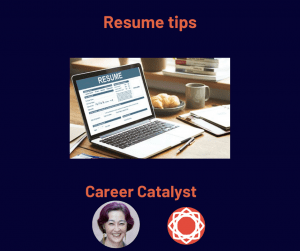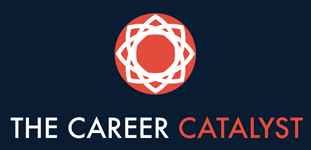
I know, I know, this topic seems done to death. Google “resume basics” and you’ll thousands of results, but how on earth are you supposed to know who the writers are and whether you can trust their advice?
I’m here to help! I actually read up on this stuff for funsies, and follow the latest research, while coloring it all with my own experiences with clients and from on search committees. Here are a few basics to get you started.
- Don’t use a template. I know, Word has samples pre-loaded and there are dozens available online, so it seems like an easy way to start. But don’t be tempted. I can spot a template a mile off, which means that recruiters can too, and the resume is really your chief marketing document, so you want it to reflect you, not some nameless internet entity. Worse, templates are hard to change to suit your needs, and often contain outdated and unnecessary sections like hobbies. They also often make terrible use of space, forcing you to try to squeeze your marketable skills and experiences in, using tiny fonts and strange spacing. Instead of a template, use a clean Word (or equivalent) document.
- Avoid too much focus on prettiness. Your resume should clearly not be ugly, but don’t sacrifice content for decoration. If you can fit that pretty frame of vines down the side and still get all your valuable info in, great! But remember that the people making decisions on whether or not to interview candidates are probably not doing so based on your pretty color scheme.
- Arrange the document in order of importance. Don’t lead with detailed descriptions of what you’ve been doing if you want to do something different. Instead, highlight those skills that translate to any job, and lead with a section called something like “Relevant Experience.”
- Put your dates in there. I know, people will tell you that dates reveal too much about your age, but in my experience, employers are not making good assumptions about you because your resume lacks dates. Instead, they are making assumptions that you can’t keep a job for more than 4 months or that you’re ancient and not up-to-date on trends, etc. So just go ahead and add the dates. (And if you, in fact, haven’t held a job for more than 4 months, be sure to seek help from a career counselor!)
- Start the document off with some sort of summary section—your key skills, your experience highlights, whatever makes sense to you. Make this clean and clear, but also demonstrate what you’re saying. It doesn’t really say much when you have a bullet point that says “Motivated self-starter,” unless you back it up with something like, “as shown by multiple promotions within my first 12 months of employment.”
- Don’t just write a list the tasks of your positions. This is boring to read, and it doesn’t showcase your abilities. Instead, speak to your accomplishments. Nobody really cares that you attended staff meetings or answered the phone, but it’s very interesting to see that you contributed new ideas that helped the organization grow or that you prioritized calls in a busy and demanding environment, resulting in fewer customer complaints.
- Don’t subject your audience to meaningless keywords. Yes, keywords can be very important, but only use them if they have value and meaning. If your grandma reads it, will she understand what you’re saying? Remember that you have at least 2 audiences: the people whose job it is to decide who gets interviewed, who may be HR or may come from other departments across the organization, and the people who make the hiring decision, who understand your role more fully.
- Be absolutely sure that your resume does not have grammar, punctuation, or spelling errors! Your application paperwork is supposed to demonstrate you at your very best, when you are paying your closest attention to the work, so sloppiness tells employers that, even at your best, you aren’t particularly attentive.
- Emphasize your job titles, not the employer name of the dates. The exception, of course, is when you are applying for an internal position, in which case you should emphasize both your title and the employer. I like the job title listed first, in boldface, but you can also use a slightly larger font, all caps, small caps, etc. Do what you think looks pleasant and eye-catching without being busy.
- And finally, don’t lie. I know that the common wisdom floating around out there is that everybody lies on their resumes, but please don’t. It may help you get an interview, and if you are very convincing, it may even help you land a job, but the time will come when the lie gets discovered, and nothing good will come of that. I can almost guarantee that you will get fired, and in many industries, you will also be black-balled so you can’t find work in the field again. If your lies have cost the organization money, you may even wind up with a lawsuit on your hands. In resumes, as in dating profiles, honesty is really the best policy.



